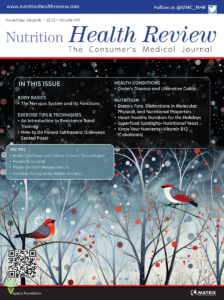 Copper is an essential mineral found in all tissues of the human body.1,2 Copper’s effect on the body was discovered as 400 BC by Hippocrates, but there is still ambiguity surrounding its exact mechanisms of action.3,4 Copper deficiency (too little copper)and copper toxicity (too much copper) are both rare in the United States.1 While the human body only needs trace amounts of copper, maintaining a proper balance of copper is crucial to our health for a number of reasons.
Copper is an essential mineral found in all tissues of the human body.1,2 Copper’s effect on the body was discovered as 400 BC by Hippocrates, but there is still ambiguity surrounding its exact mechanisms of action.3,4 Copper deficiency (too little copper)and copper toxicity (too much copper) are both rare in the United States.1 While the human body only needs trace amounts of copper, maintaining a proper balance of copper is crucial to our health for a number of reasons.
BENEFITS
Copper is thought to be involved in a wide range of bodily functions. This metal boosts collagen production and helps to build strong, healthy connective tissues, strengthening our tendons, ligaments, and muscles.1 Copper also helps maintain skin elasticity and structure, and is hypothesized to have antioxidant properties.5 Additionally, copper is thought to play an important role in maintaining the human body’s cardiovascular, circulatory, immune, and nervous systems.1-3
Cardiovascular System—Animal studies have linked low copper levels to cardiovascular disease, but the relationship between heart health and copper levels in humans has yielded inconsistent results. This is mostly due to the absence of a reliable, consistent marker of copper nutritional status, which makes it difficult to measure.3,4,7,8 However, research in this area is growing. Preliminary findings in human subjects have shown a link between copper deficiency, high cholesterol, and high blood pressure.1
Circulatory System—Copper is thought to help regulate our heart rate as well as play an important role in iron absorption and metabolism, which affects red blood cell efficacy.1-4 The human body uses iron to make hemoglobin, a protein in red blood cells that carries oxygen from the lungs to all parts of the body.2-4
Immune System—Copper is thought to play a role in developing, activating, and maintaining the immune system, but how it does this is not fully understood.3,6-9 Copper deficiency can lead to neutropenia, a condition in which the body has abnormally low numbers of white blood cells, called neutrophils, which help the body fight off infection.1
Skeletal System—A severe deficiency in copper has been linked to lower bone mineral density and an increased risk of osteoporosis.1
Nervous System—Maintaining a copper balance is critical for brain health; having too much or too little copper can damage brain tissue. Neurodegenerative diseases have been observed in adults who have a copper imbalance, and excessive amounts of copper can lead to oxidative damage in the brain.1,2 Though there is limited and sometimes conflicting evidence, some experts believe that dietary copper deficiency plays a role in the etiology and pathophysiology of Alzheimer’s disease.8
FOOD SOURCES
Supplemental copper is rarely necessary; most Americans get an adequate supply of copper from their diet.1 Copper is found in shellfish, meat, and seeds.1,2,4,5 If you have been professionally diagnosed with a copper deficiency, which is very rare, here are some good food sources for copper:
- Oysters
- Dark, leafy green vegetables
- Cocoa
- Sunflower seeds
- Whole grains
- Organ meats (e.g., kidneys and liver)
FINDING THE BALANCE
Copper deficiency is unusual, but is more likely to occur in individuals who have had stomach surgery or are taking zinc supplements, both of which can impair copper absorption.10 Symptoms of dietary copper deficiency include fatigue and weakness, frequent illness, problems with memory and learning, brittle bones, difficulty walking, sensitivity to cold, pale skin, premature gray hair, and vision loss.10 Usually, acquired copper deficiency (i.e., result of stomach surgery or zinc supplementation) is treated with copper supplementation. Copper deficiency can also be caused by an inheritable disease called Menkes syndrome, in which babies are born with a genetic defect that prevents copper from being distributed properly throughout the body and results in a number of physical and mental developmental issues, but this disease is very rare.11
Copper toxicity, on the other hand, or too much copper, can result from long-term exposure to high levels of copper (e.g., through contaminated food, drinking water, and/or air).12 Though this condition is also rare in the United States, it is nonetheless dangerous and can be life-threatening.1,2,8,9 Copper toxicity can trigger cell death, causing damage to the brain, liver, heart, kidney, and gastrointestinal (GI) tract.7-9 Symptoms of copper toxicity include gastrointestinal distress (e.g., nausea, vomiting, diarrhea, stomach pain), headache, dizziness, weakness, and a metallic taste in the mouth.12 Treatment for copper toxicity includes zinc supplementation and hemodialysis (a machine used to filter toxins out of the blood).12
The recommended daily allowance (RDI) of copper for adults and adolescents is 900mcg per day.1 The upper limit of copper in adults and adolescents is 10,000mcg (10mg) per day; anything higher than this can result in copper toxicity.1
BOTTOM LINE
Copper plays in essential role in your health. Most people get enough copper by eating a healthy diet, so copper supplements are usually not necessary, and should be avoided in individuals who are not deficient. Though copper deficiency and copper toxicity are both rare in the United States, a deficiency in copper is more common than toxicity. Consult with a qualified healthcare professional if you have symptoms of either copper deficiency or toxicity.1
SOURCES
- Wilson DR. Health benefits and risks of copper. 23 Oct 2017. Medical News Today website. https://www.medicalnewstoday.com/articles/288165. Accessed 12 Jan 2021.
- Wilson DR. Copper: why this heavy metal is good for you. 19 Dec 2016. Healthline website. https://www.healthline.com/health/heavy-metal-good-for-you-copper. Accessed 13 Jan 2021.
- Linus Pauling Institute – Oregon State University website. Copper. Updated 13 Dec 2013. https://lpi.oregonstate.edu/mic/minerals/copper. Accessed 13 Jan 2021.
- Bost M, Houdart S, Oberli M, et al. Dietary copper and human health: current evidence and unresolved issues. J Trace Elem Med Biol. 2016;35:107-115.
- Jennings KA. Collagen: what is it and what is it good for? 5 May 2020. Healthline website. https://www.healthline.com/nutrition/collagen. Accessed 12 Jan 2021.
- Collins JF, Klevay LM. Copper. Adv Nutr. 2011;2(6):520–522.
- Hordyjewska A, Popiołek Ł, Kocot J. The many “faces” of copper in medicine and treatment. Biometals. 2014;27(4):611–621.
- Office of Dietary Supplements (ODS). Health professional fact sheet – copper. Updated 3 June 2020. National Institutes of Health website. https://ods.od.nih.gov/factsheets/Copper-HealthProfessional/. Accessed 13 Jan 2021.
- Office of Dietary Supplements (ODS). Fact sheet for consumers – copper. Updated 6 Dec 2019. National Institutes of Health website. https://ods.od.nih.gov/factsheets/Copper-Consumer/. Accessed 13 Jan 2021.
- Nail R. Copper deficiency. Updated 27 Jan 2018. Healthline site. https://www.healthline.com/health/copper-deficiency. 4 Feb 2021.
- Mount Sinai site. Menkes syndrome. https://www.mountsinai.org/health-library/diseases-conditions/menkes-syndrome. 4 Feb 2021. Eske J. Copper toxicity: treatment and symptoms. 30 Nov 2020. Medical News Today site. https://www.medicalnewstoday.com/articles/copper-toxicity. 4 Feb 2021.





